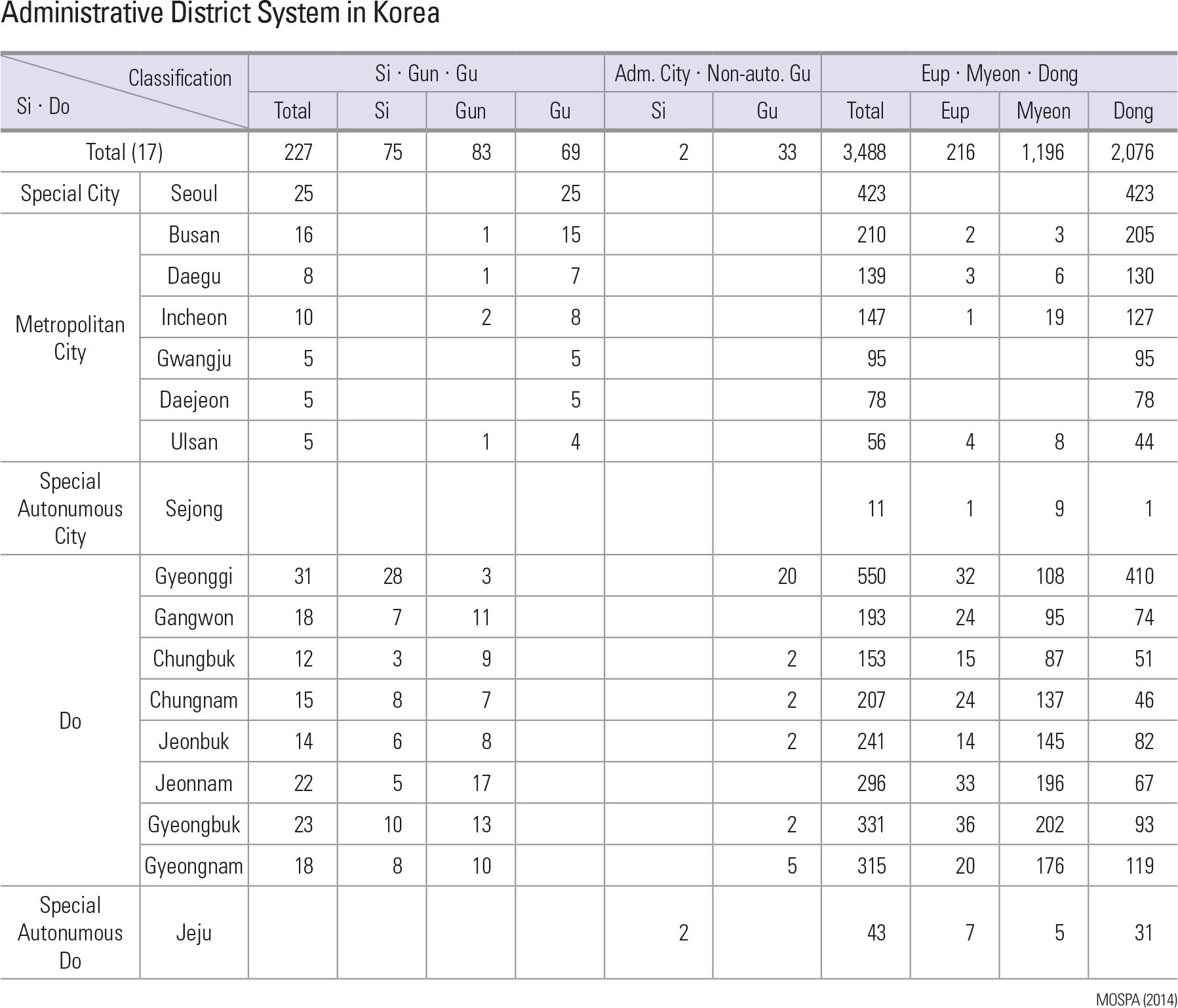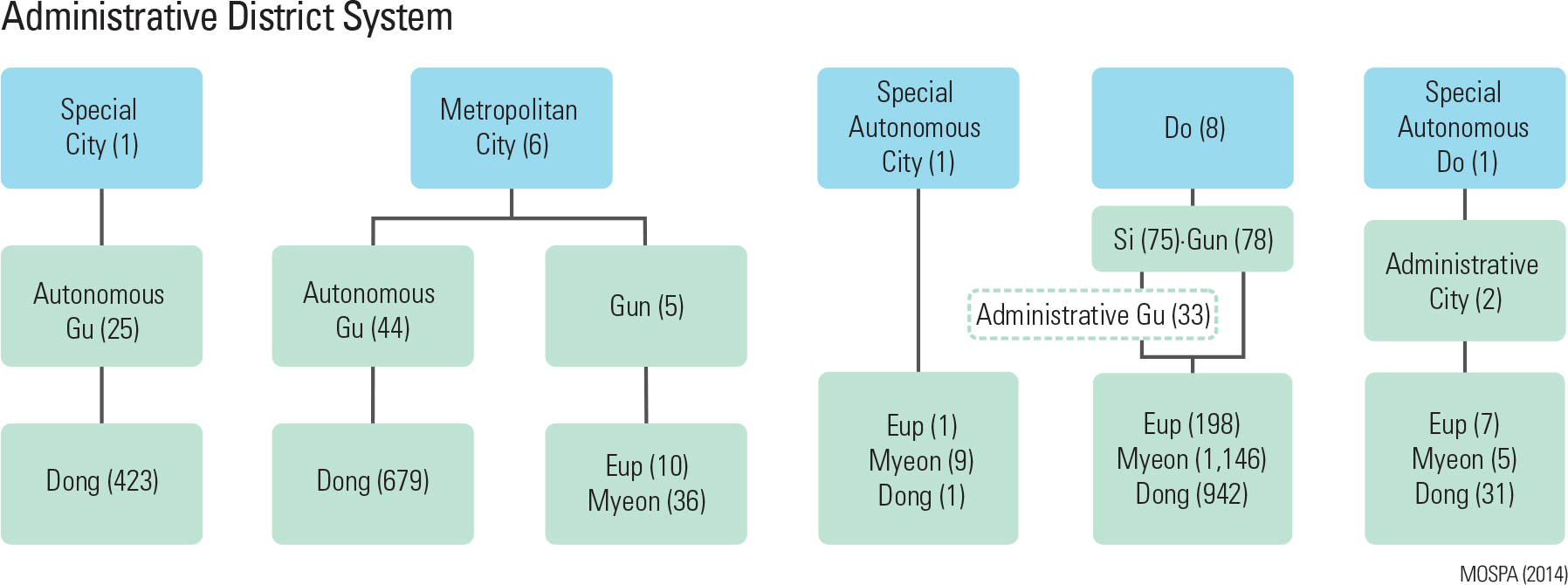Local autonomy refers to various activities through which a self-governing body representing the residents within a certain regional boundary carries out its political and administrative decision making while maintaining relative independence from the central government. In this global era, the growing demands for improving regional competitiveness, inter-regional equal development, and resident-oriented administrative services have necessitated local autonomy more than ever. Local autonomy mainly consists of autonomous power over local affairs and an independent budgetary capacity in a geographical region with an explicit boundary where residents and a self-governing body are located. Local governmental autonomy has been a recent global trend.
The local self-governing body that plays a key role in local autonomy in Korea is the administrative organization that maintains close relations with its residents. The local self-governing body is constituted of local residents, and it forms a legal entity. There are two types of self-governing bodies in Korea; macro-level bodies such as the Special City, Metropolitan City, Special Autonomous City, Do or Special Autonomous Province, and primarylevel bodies such as Si, Gun or Gu. Local residents may participate in local autonomy mainly through elections. The local residents elect both the members of local councils and the heads of local governments. Both macro-level and primarylevel local councils are accordingly constituted. The heads of local governments include the mayor of the Seoul Special City, the mayor of the Metropolitan City, the governors of Dos, and heads of Guns and Autonomous Gus. The heads of local governments may request that residents vote on important matters which impose an excessive burden to the government or have a significant effect on the residents. The residents also have the right to recall the head of the local government or local council members.
After 30 years of preparation, the establishment of local councils in 1991 has ushered forth the era of local autonomy, and since then the scope of local affairs and local authority has been expanding. Significant local autonomy includes jurisdiction, organization and administrative management of local government, the promotion of residents’ welfare, the promotion of industries including agriculture, forestry, trade, factories, local development and the establishment and management of public and private facilities for residents, the promotion of education, athletics, culture, art, public safety, and firefighting.
In 2014, the macro-level local self-governing bodies in Korea are the Seoul Special City: six metropolitan cities including Busan, Daegu, Incheon, Gwangju, Daejeon, and Ulsan: the Sejong Special Autonomous City: eight Dos including Gyeonggi-do, Gangwon-do, Chungcheongbuk-do, Chungcheongnam-do, Jeollabuk-do, Jeollanamdo, Gyeongsangbuk-do and Gyeongsangnamdo, and the Jeju Special Autonomous Province. In addition, there are 262 primary-level local selfgoverning bodies including 77 Sis (including 2 nonautonomous Sis), 83 Guns and 102 Gus (including 33 non-autonomous Gus). There are also 216 Eup, 1,196 Myeon, and 2,076 Dong at the lower level. All the self-governing bodies mentioned above constitute the localized administrative system in Korea.

